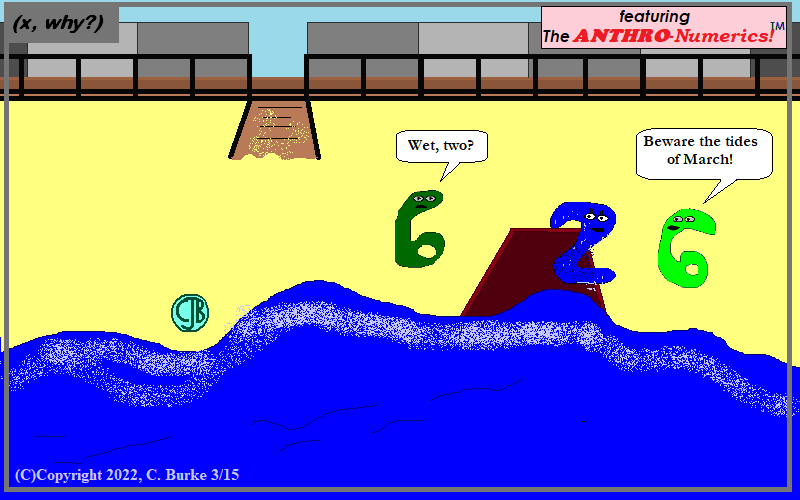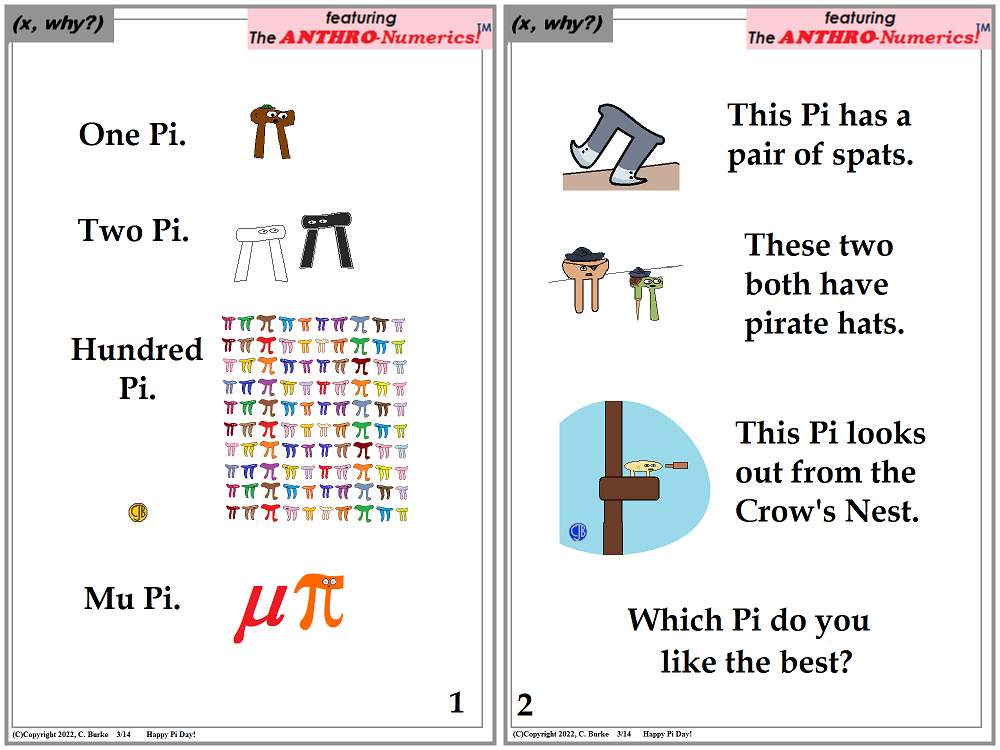Now that I'm caught up with the current New York State Regents exams, I'm revisiting some older ones.
More Regents problems.
Geometry Regents, January 2011
Part I: Each correct answer will receive 2 credits.
11. Which set of numbers does not represent the sides of a right triangle?
1) {6, 8, 10}
2) {8, 15, 17}
3) {8, 24, 25}
4) {15, 36, 39}
Answer: 3) {8, 24, 25}
I can't stress enough how much time you will save if you know the first few primitive Pythagorean Triples, and their multiples.
If you know 3-4-5, which becomes 6-8-10, 9-12-15, etc., 5-12-13, which becomes 10-24-26, 15-36-39, etc., 7-24-25, and 8-15-17, then you will recognize three of these immediately, or you'll recognize the one that you know cannot be correct.
If 7-24-25 is a right triangle, then 8-24-25 cannot possibly be because of the relationship of the sides.
If you didn't know these, you would have to calculate a2 + b2 and c2 to see if they were the same.
If choice (3), they are not. 64 + 576 =/= 625
12. In the diagram below of rhombus ABCD, m∠C = 100.
What is m∠DBC?
1) 40
2) 45
3) 50
4) 80
Answer: 1) 40
If this is a rhombus that angle ABC is supplementary to 100 degrees, making that angle 80 degrees. If this is a rhombus, the diagonal will bisect the angle, so angle DBC will be 40 degrees, which is Choice (1).
13. In the diagram below of circle O, radius OC is 5 cm. Chord AB is 8 cm and is perpendicular to OC at point P.
What is the length of OP, in centimeters?
1) 8
2) 2
3) 3
4) 4
Answer: 3) 3
Look at the image below and consider what I said in the previous question about primitive Pythagorean Triples.
You can draw radius OB, which has a length of 5 and is the hypotenuse of right triangle OPB. When a radius (or a diameter) intersects a chord at a right angle, it bisects the chord. (You can prove this by drawing OA and using the HL Theorem.) This makes AP and PB each 8/2 = 4.
So now we have an x-4-5 right triangle. You can do the math but x = 3. (Also, PC = 2, if they ever ask that.) Choice (3) is the correct answer.
14. What is an equation of the line that passes through the point (−2,3)
and is parallel to the line whose equation is y = 3/2 x − 4?
1) y = -2/3 x
2) y = -2/3 x + 5/3
3) y = 3/2 x
4) y = 3/2 x + 6
Answer: 4) y = 3/2 x + 6
Parallel lines have the same slope. Eliminate choices (1) and (2).
Check which line includes the point (-2, 3).
(3) =? 3/2 (-2)
3 = -3, not true. Eliminate Choice (3)
(3) =? 3/2 (-2) + 6
3 = -3 + 6
3 = 3. Choice (4) is correct.
15. TIn scalene triangle ABC, m∠B = 45 and m∠C = 55. What is the
order of the sides in length, from longest to shortest?
1) AB, BC, AC
2) BC, AC, AB
3) AC, BC, AB
4) BC, AB, AC
Answer: 4) BC, AB, AC
The shortest side is opposite the shortest angle. The longest side is opposite the biggest angle. Angle A is 180 - (45 + 55) = 80, which is the biggest angle.
The angles from biggest to smallest are A, C, B, so the sides from longest to shortest are BC, AB, AC, which is Choice (4).
More to come. Comments and questions welcome.
More Regents problems.
I also write Fiction!
You can now preorder Devilish And Divine, edited by John L. French and Danielle Ackley-McPhail, which contains (among many, many others) three stories by me, Christopher J. Burke about those above us and from down below.
Preorder the softcover or ebook at Amazon.
Also, check out In A Flash 2020, by Christopher J. Burke for 20 great flash fiction stories, perfectly sized for your train rides.
Available in softcover or ebook at Amazon.
If you enjoy it, please consider leaving a rating or review on Amazon or on Good Reads.
|
 |
 |


















